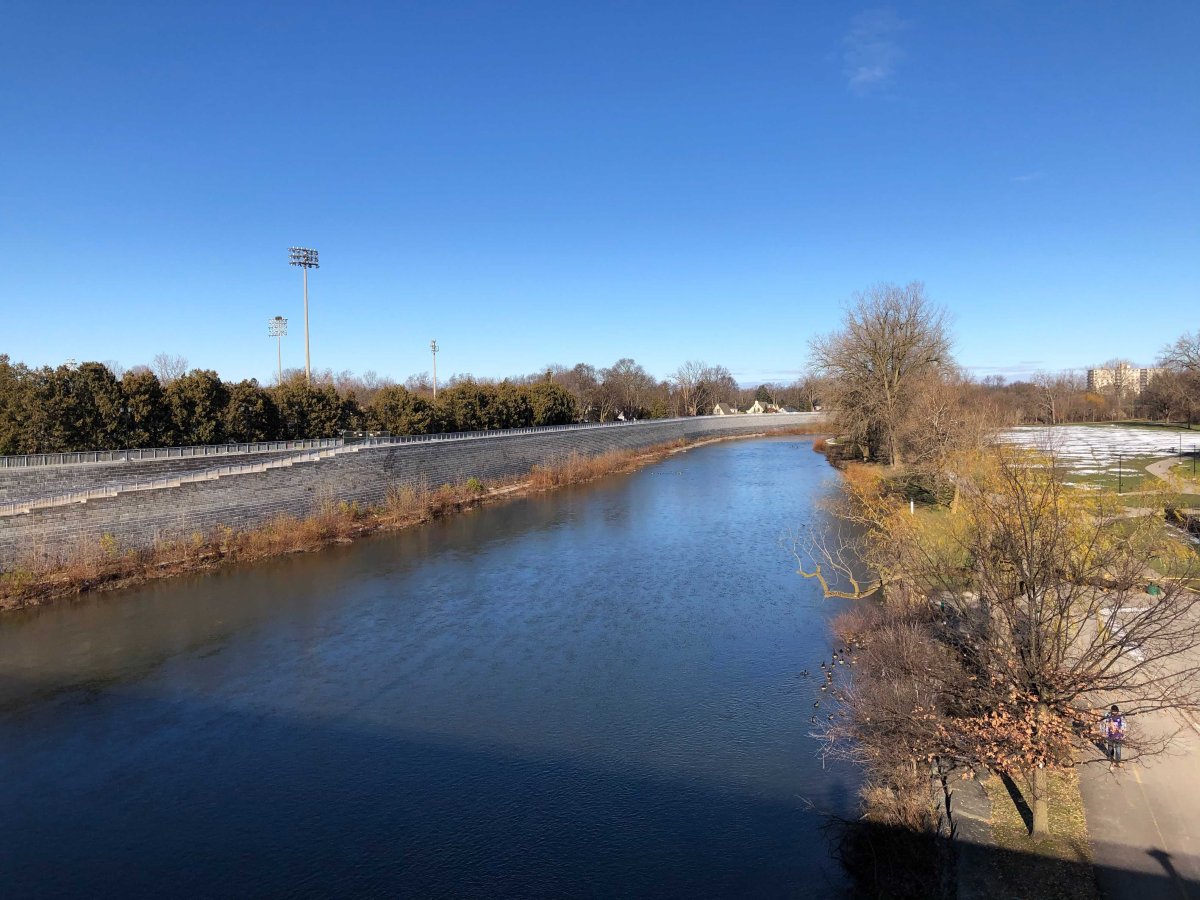As local conservation authorities warn of high water levels around the London, Ont., area, homeless organizations are shedding light on how it’s impacting encampments.

On Monday, the Upper Thames River Conservation Authority (UTRCA) issued a statement saying water levels in local areas remain above normal and advising residents, including children and pets, to stay away from watercourses such as rivers, streams, ditches and ponds.

Teresa Hollingsworth, manager of community and corporate services with the UTRCA, stressed that prior to the conservation authority’s alert, water levels had already been recorded as high.
“We had all of that snow that melted right across the watershed that’s kind of working its way through London,” she explained. “On top of that, we had rain falling on either saturated or frozen ground, which means it goes really quickly into our streams and into the river.”
According to the UTRAC, stream banks are slippery and unstable, and the water is cold and fast-moving on top of increasing levels. Flood control reservoirs are especially hazardous due to fluctuating water levels, the statement read.
“The UTRCA expects streams and rivers will respond to the forecast rain with runoff totals similar in magnitude to last week,” the statement continued. “If the higher precipitation forecasts materialize, some traditional low-lying flood plain areas may be inundated due to saturated ground conditions and already elevated water levels.”
Hollingsworth said the London region might not see a drop in water levels until next week as the UTRCA expects them to be elevated heading into the weekend. However, serious flooding has not been predicted as the conservation authority’s flood control reservoirs at the Fanshawe, Wildwood and Pittock conservation areas are being operated to reduce downstream flooding.
But according to the London Homeless Coalition, high-water levels have already taken a toll on encampments around the city.
“As climate crisis worsens, so does conditions for people living outdoors,” Jacyln Seeler, executive director of the London Homeless Coalition, wrote in an email.
“Whether that is under a hot summer sun in a heat alert, a cold weather alert or high levels of water pushing out their self-sheltering, the solution is a continuum of housing options based on need.”

She stressed the importance of “talking about the desperate need for safe and affordable housing,” saying that housing should be prioritized as a human right.
Sean Horrell, an outreach coordinator with 519 Pursuit, has been in constant contact with those living along the Thames River. He says “some are feeling very lucky that their tent wasn’t four feet closer to the riverbank, because those guys are the ones who survived with dry feet.”
“One gentleman, in particular, had his feet in freezing water for four hours one night and wound up getting frostbite on both of his feet,” Horrell said. “When you’re trying to survive outdoors, there is physical safety, and there’s mental health safety that exists.
“Every day is a struggle to survive,” he continued. “Some people took a really hard hit and are lucky to be alive.”
Horrell said the “best advice” the unhoused population is given is not to be seen. He added that unfortunately, that creates a challenge for homeless advocate groups, such as 519 Pursuit and the London Homeless Coalition, who have to find those in need in order to help them.
“When people are camping in the public park systems or maybe someplace downtown and are asked to move along, often the only place they can find where they’re not going to be seen is along the riverbanks,” Horrell said.
He added that “everyone who is outside right now is outside because they have no other choice” due to a “lack of available spaces.”

“The city and the groups that are available are doing their best to make spaces available, so that our friends can drop in and get warm or have beds overnight,” Horrell said, referencing the ongoing season of freezing temperatures ahead.
Labelling the issue of homelessness as a systemic problem facing the country, Horrell said community engagement is encouraged in brainstorming new ideas to help those in need as local shelters continue to experience “more people than available beds.”








Comments